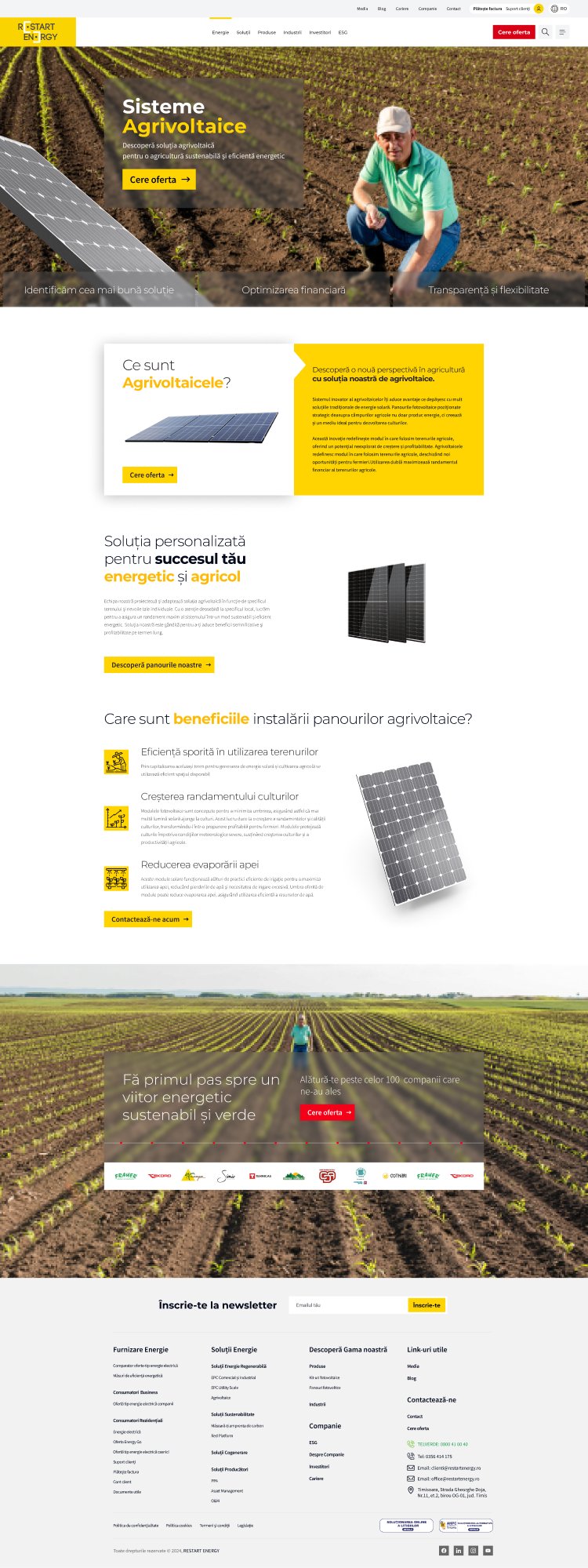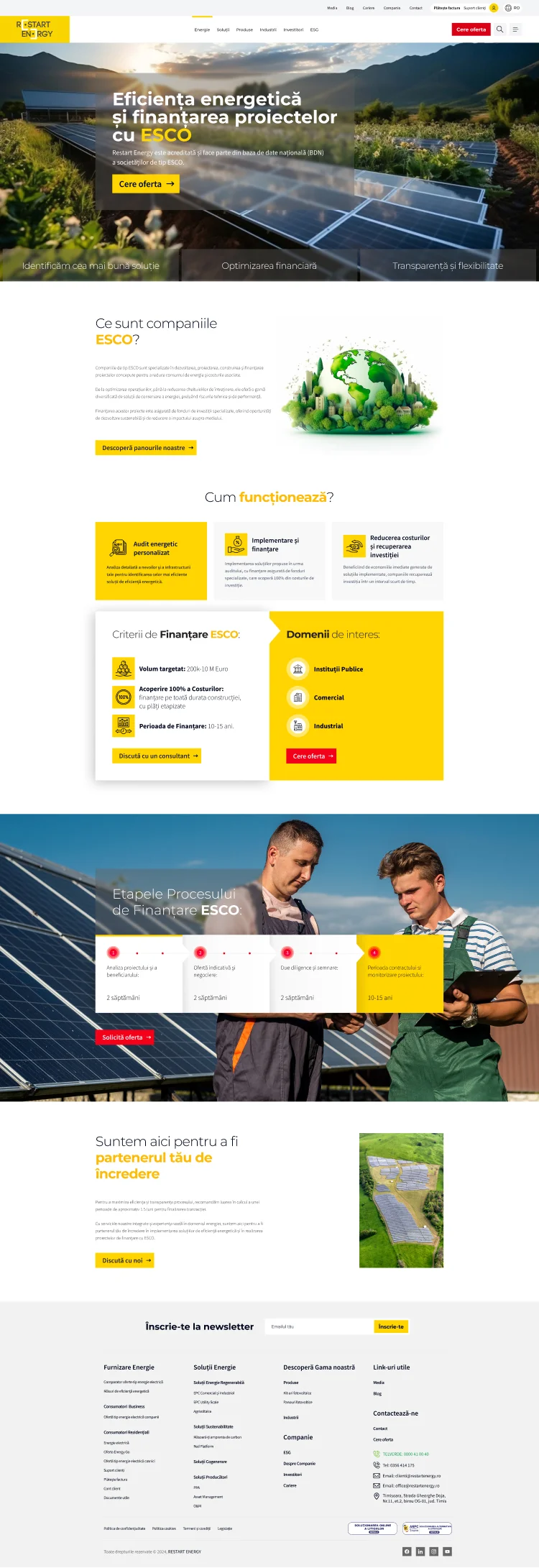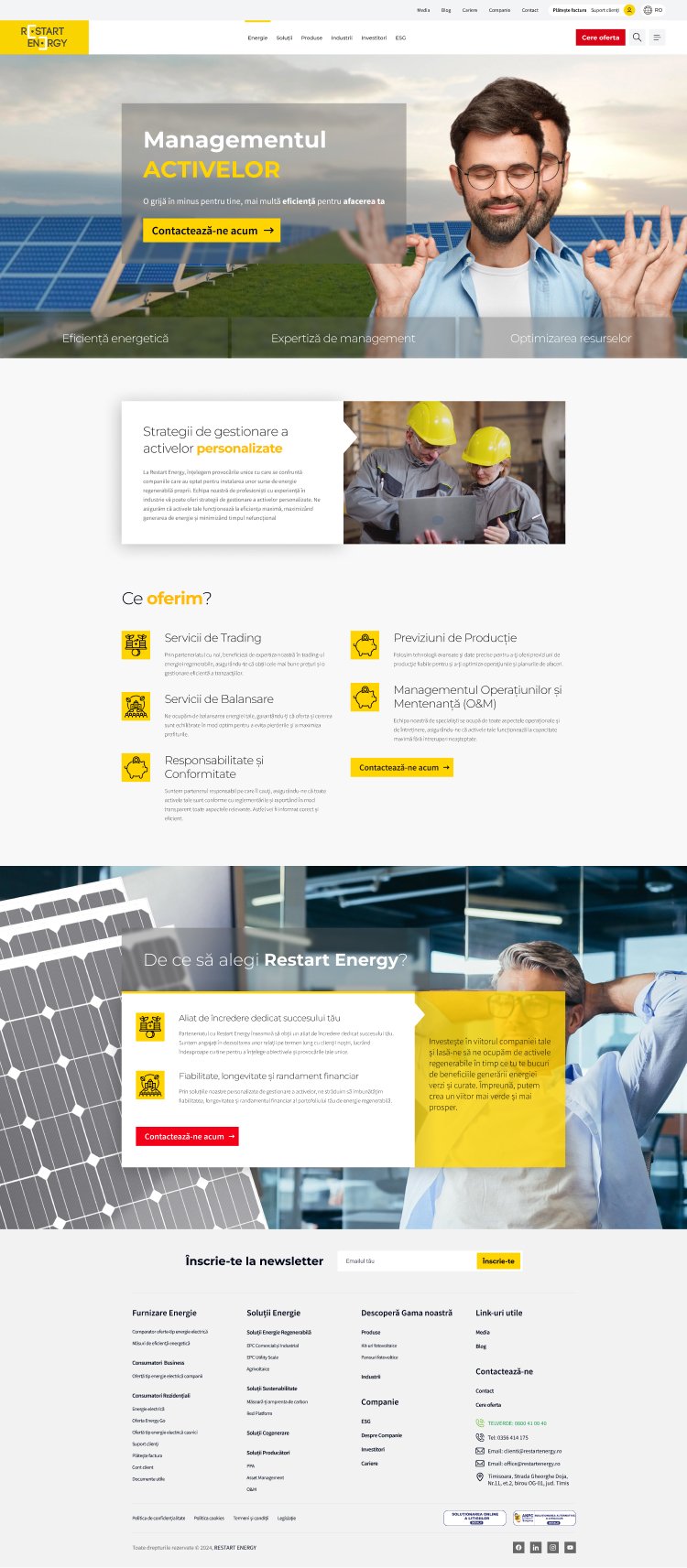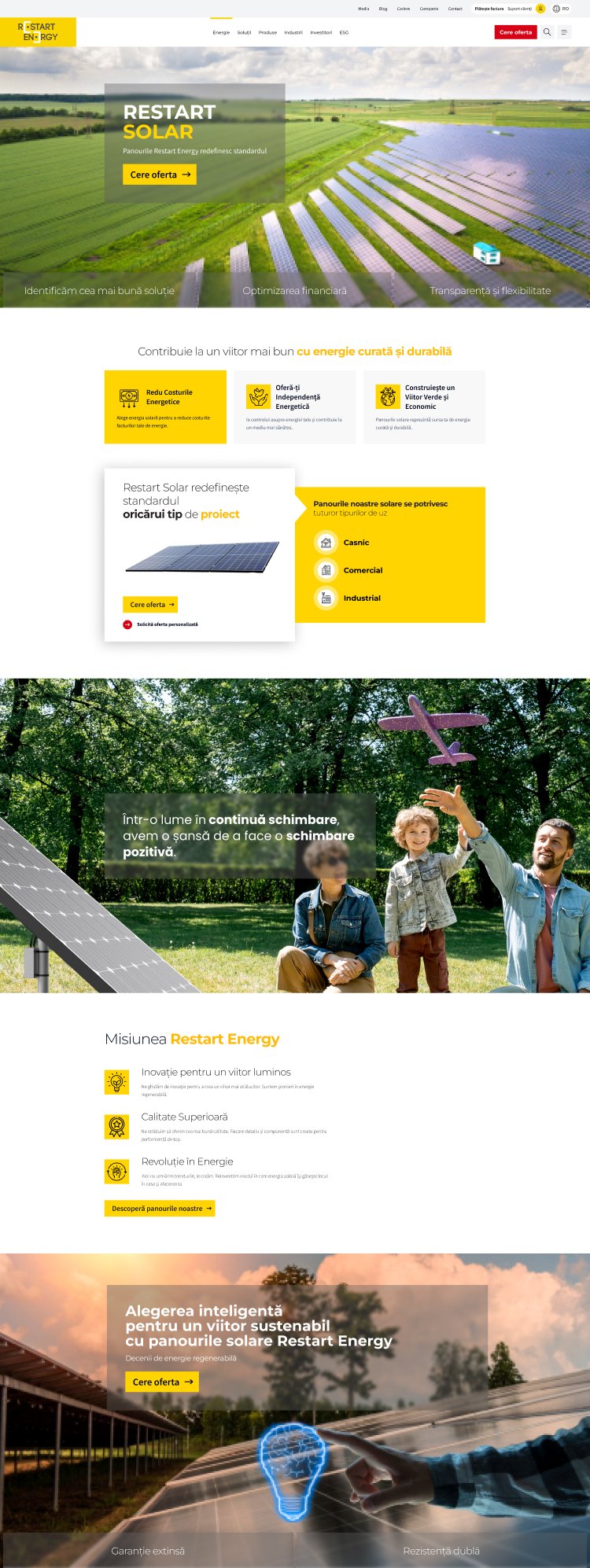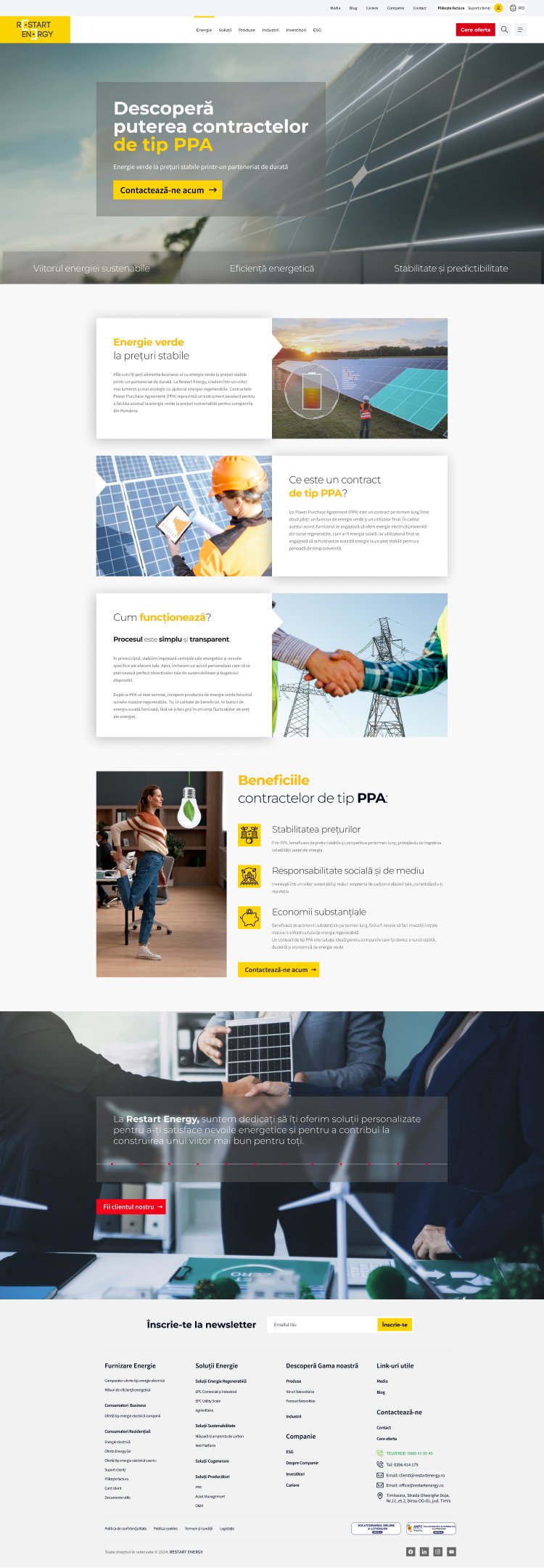
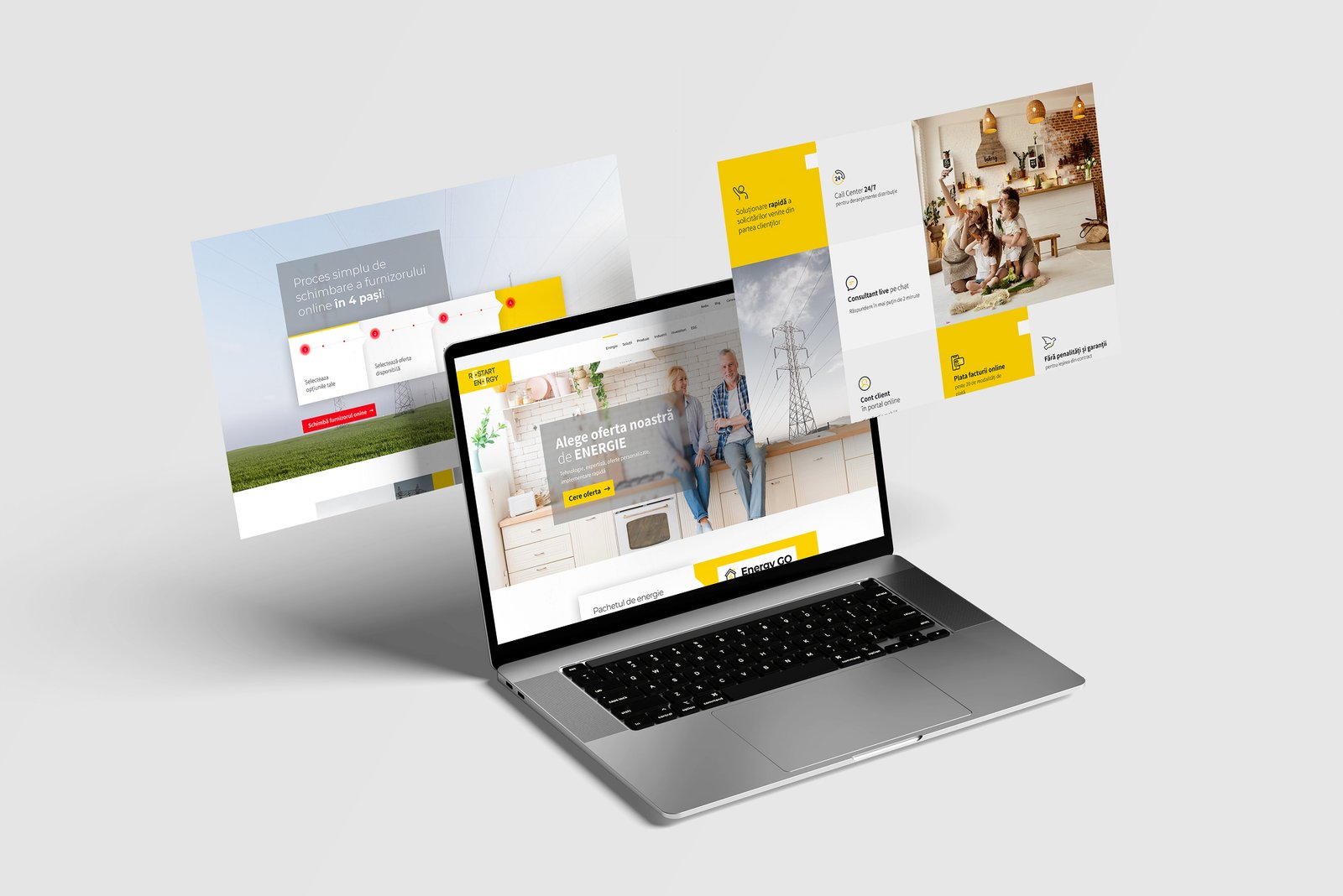

Project Overview
Restart Energy’s website offers electricity supply, solar panel solutions, and installation services for both B2B and B2C clients in Romania. With a focus on B2B solar panel installations, the platform delivers innovative, sustainable energy solutions in solar power, energy trading, and efficiency, driving eco-friendly energy management and supporting Romania's green transition.
The problem
Restart Energy has shifted its focus towards large-scale photovoltaic installations for small, medium, and large businesses, while continuing to provide electricity supply services to both residential and business clients. The previous website, designed for residential customers, no longer meets the needs of the new target audience. The challenge is to redesign the website to prioritize solar solutions for businesses of all sizes, while still supporting residential electricity supply services.
Goal
The goal of the UX should be to create a seamless, intuitive experience that prioritizes large-scale solar solutions for businesses while maintaining accessible services for residential clients, all while reflecting the brand's commitment to sustainability, innovation, and warmth in customer relationships.
My role
Lead the redesign of the Restart Energy website, ensuring a user-centered approach that effectively serves both business clients (small, medium, and large companies) and residential customers.
Create intuitive, accessible, and engaging user experiences that prioritize business needs for photovoltaic solutions while maintaining warmth and clarity for residential services.
Responsibilities
- Conduct user research
- Define user flows
- Collaborate with stakeholders
- Develop wireframes and prototypes
- Design for business and residential needs
- Focus on usability
- Incorporate brand values
- Iterate based on feedback
- Ensure scalability and flexibility
- Maintain consistency
- Interactions
User Research
Gathering insights in order to understand the needs, pain points, and behaviors of both business and residential clients, guiding design decisions for a more user-centered experience.
Pain Points
- User Experience & Navigation
- Existing sites usually provide unclear user experience.
- Navigation menus are often cluttered and confusing.
- Users struggle to find key information quickly.
- Call-to-action buttons are not prominent.
- Mobile experience is poorly optimized.
- Information & Transparency
- Pricing details are often hidden or unclear.
- Technical jargon makes information hard to understand.
- Frustrating process with too many forms and steps.
- Few websites provide clear financing options.
- Customer Support & Engagement
- Contact options are limited or hard to find.
- Live chat or real-time assistance is rarely available.
- Testimonials and case studies are not easily accessible.
- Post-installation support is often insufficient.
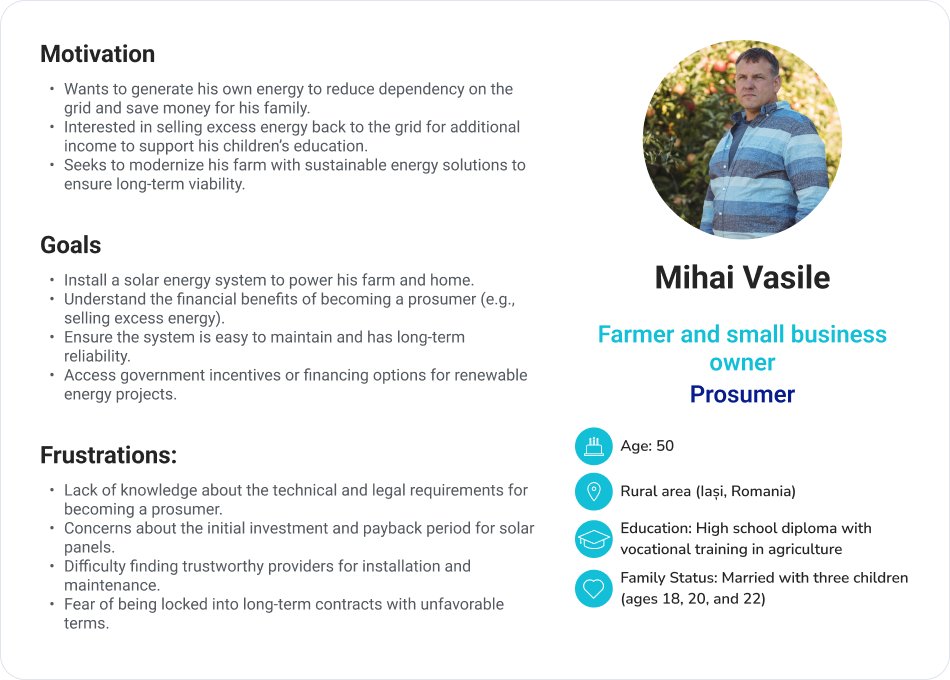
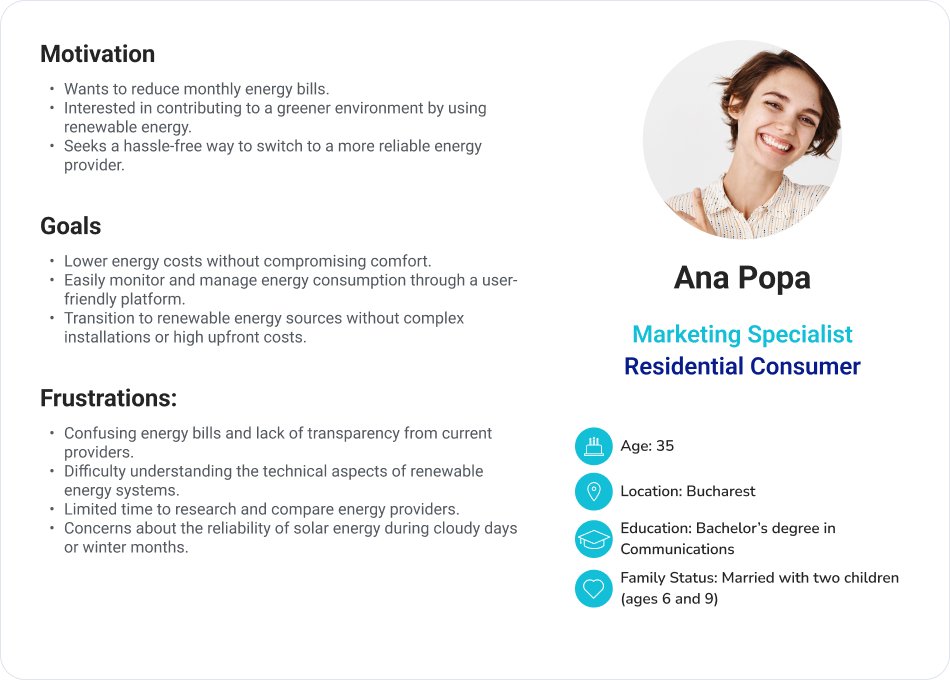
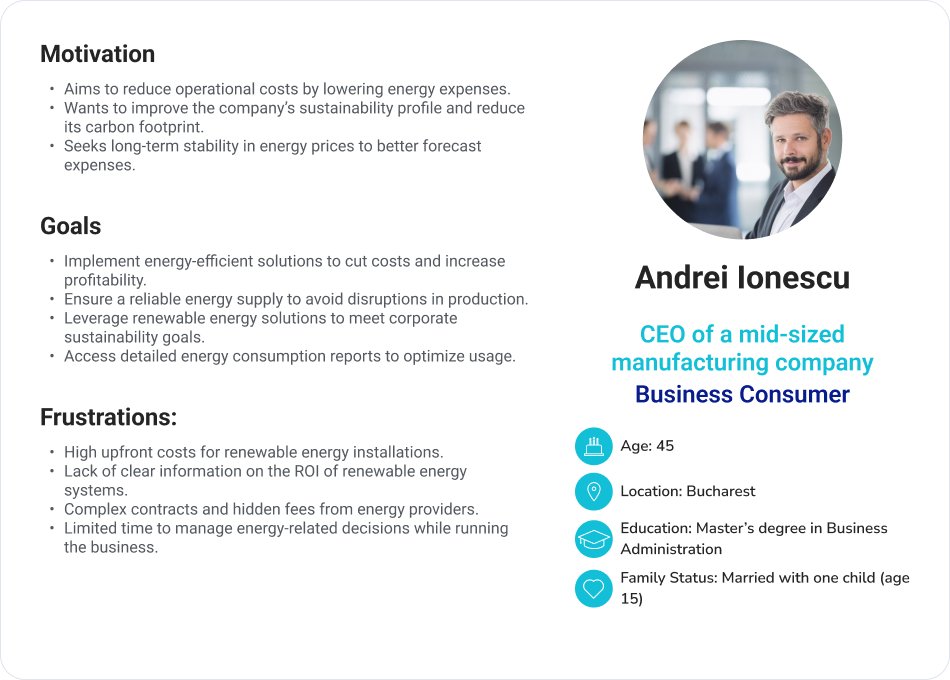
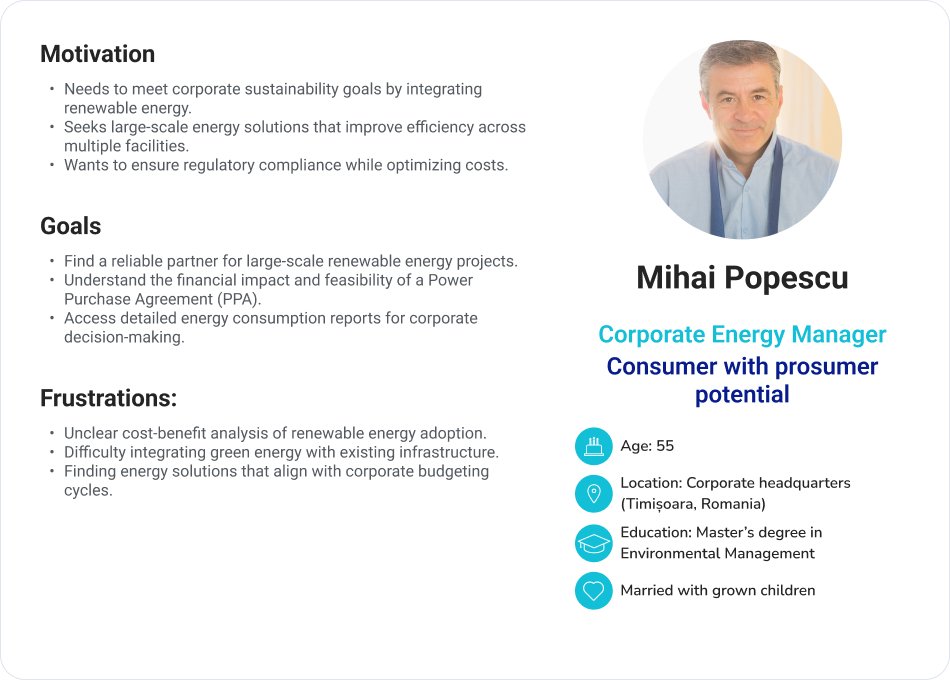
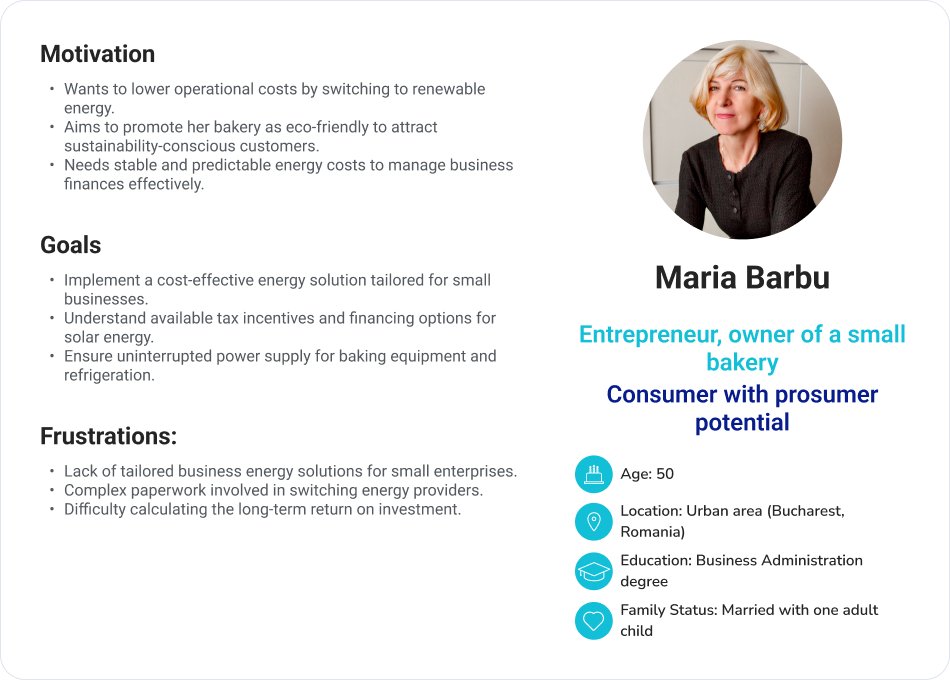
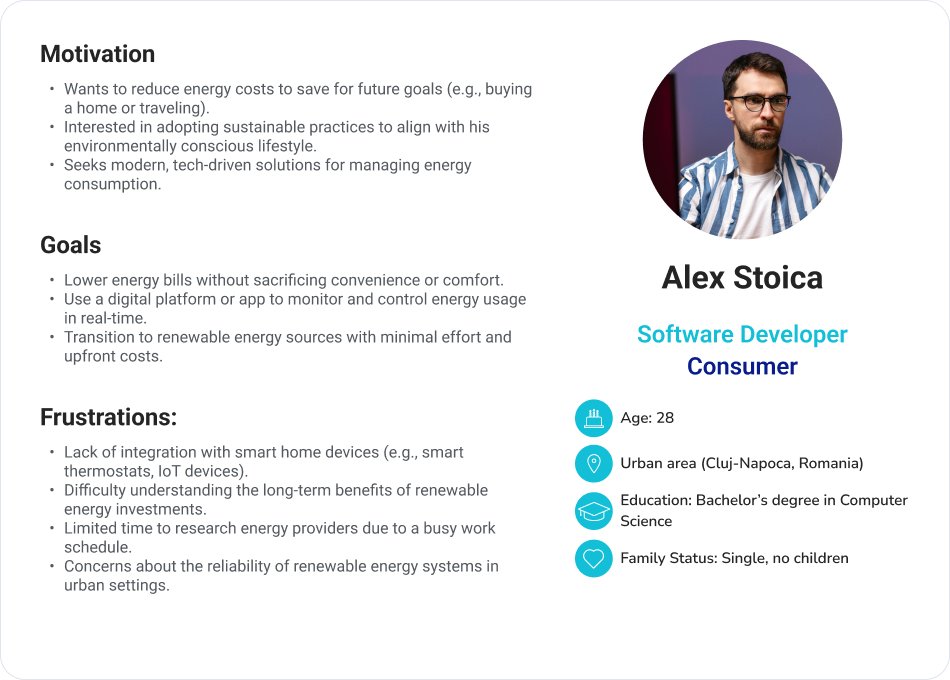
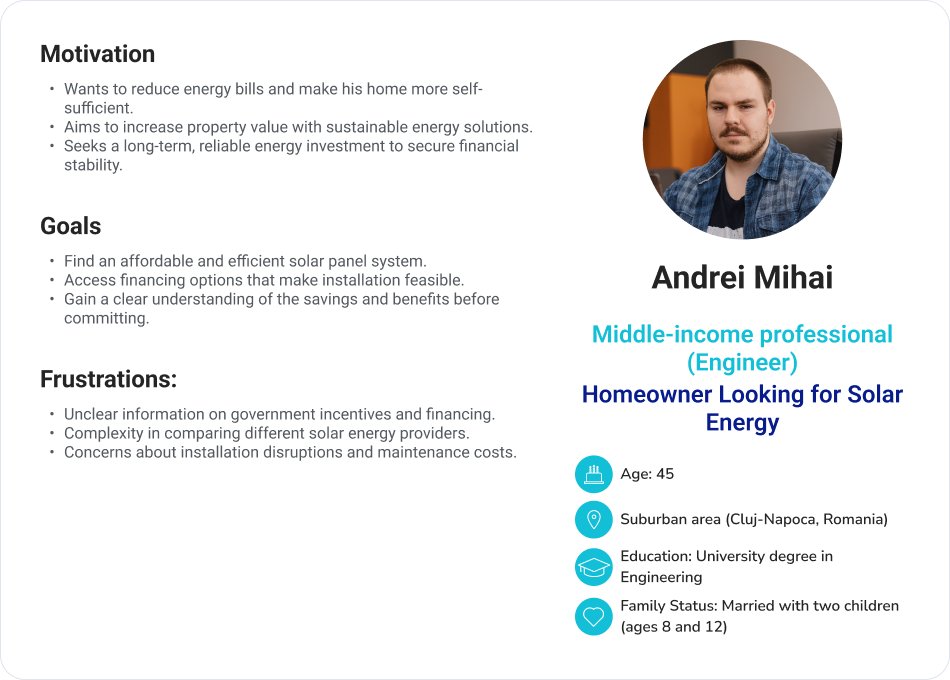
These user journeys illustrate the process of engaging with Restart Energy’s services, covering awareness, decision-making, implementation, and ongoing management across different customer types, from individual consumers to large-scale energy producers. Below you can see some examples of the user journeys created.
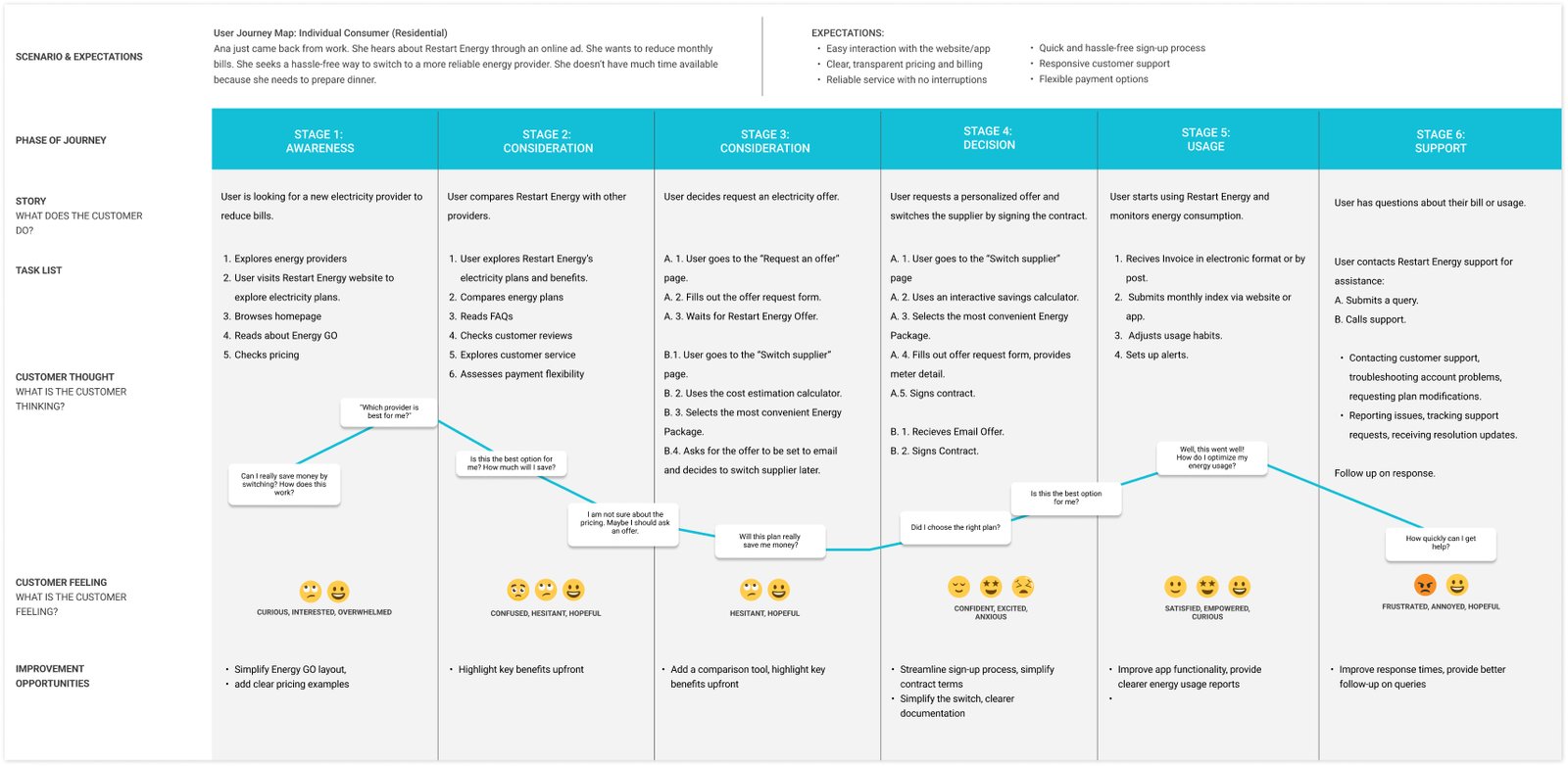
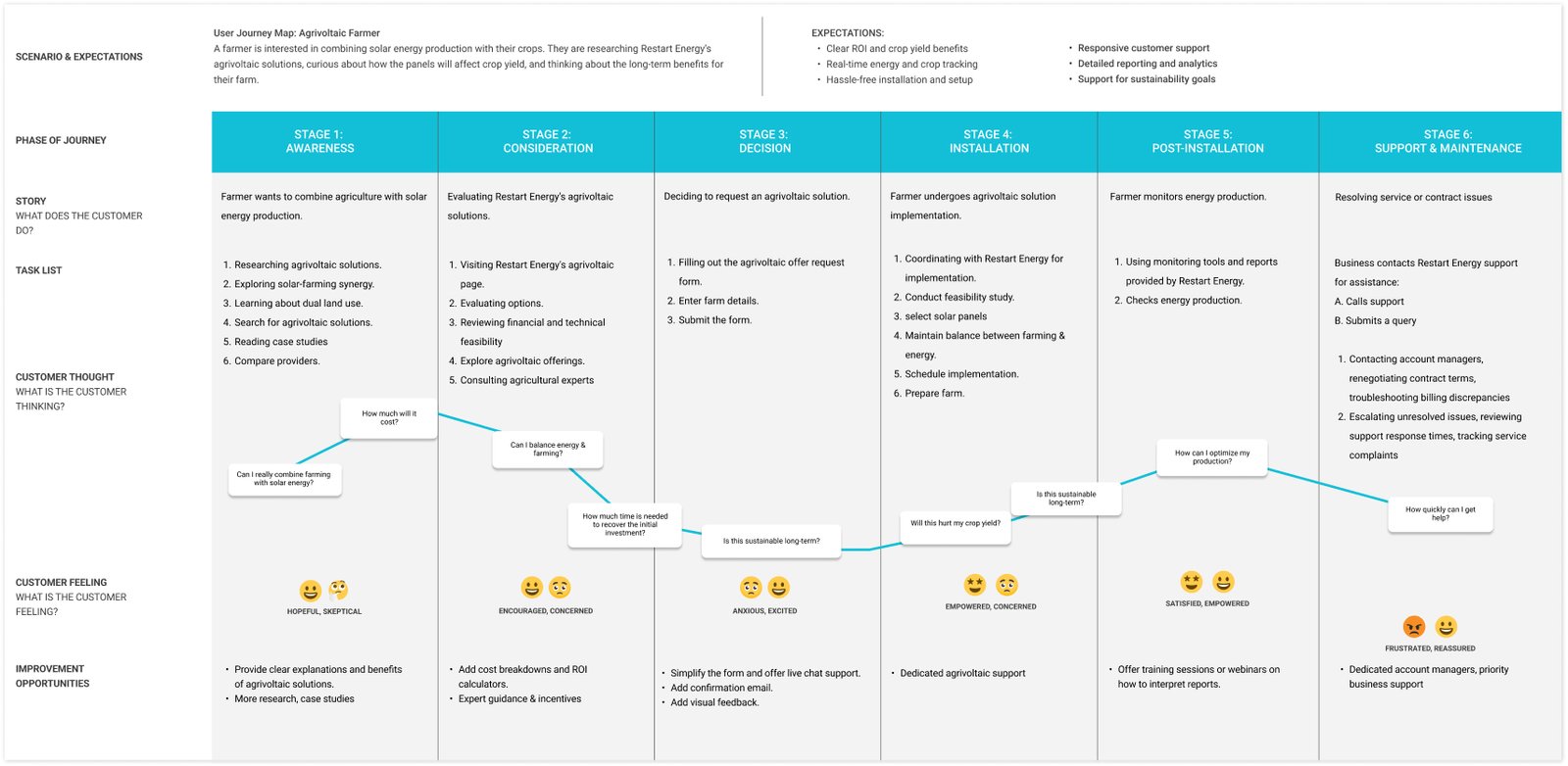
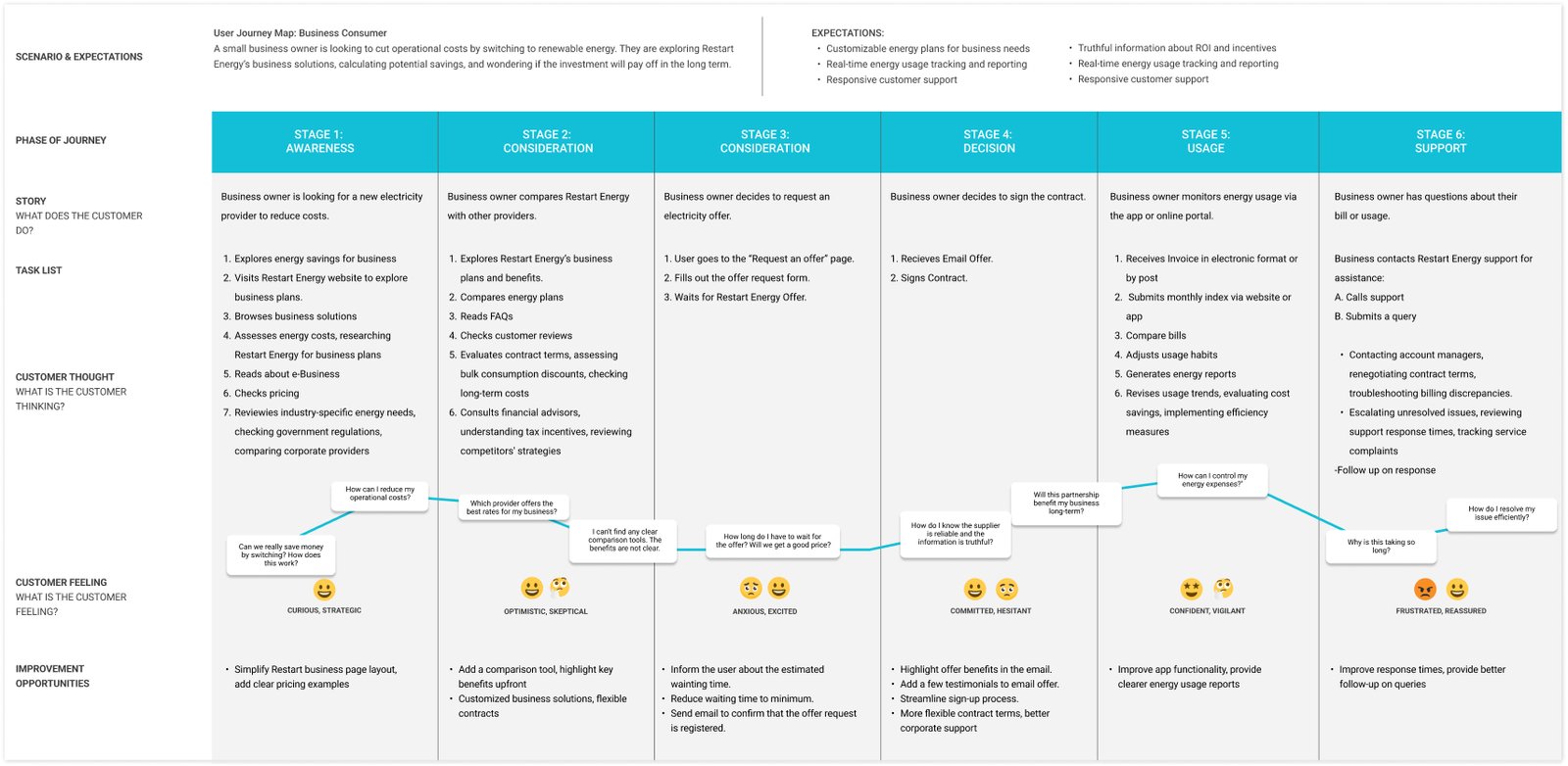
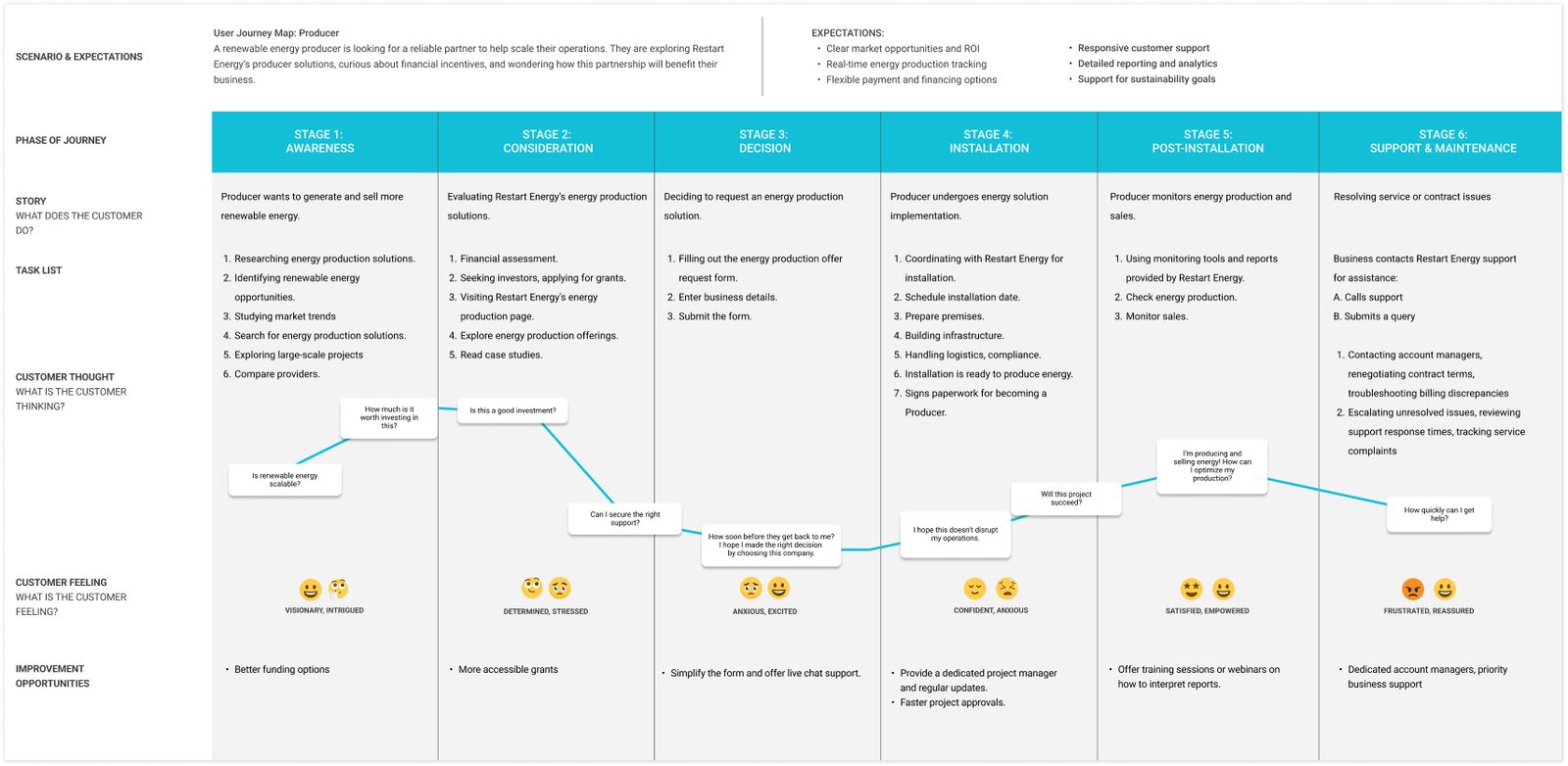
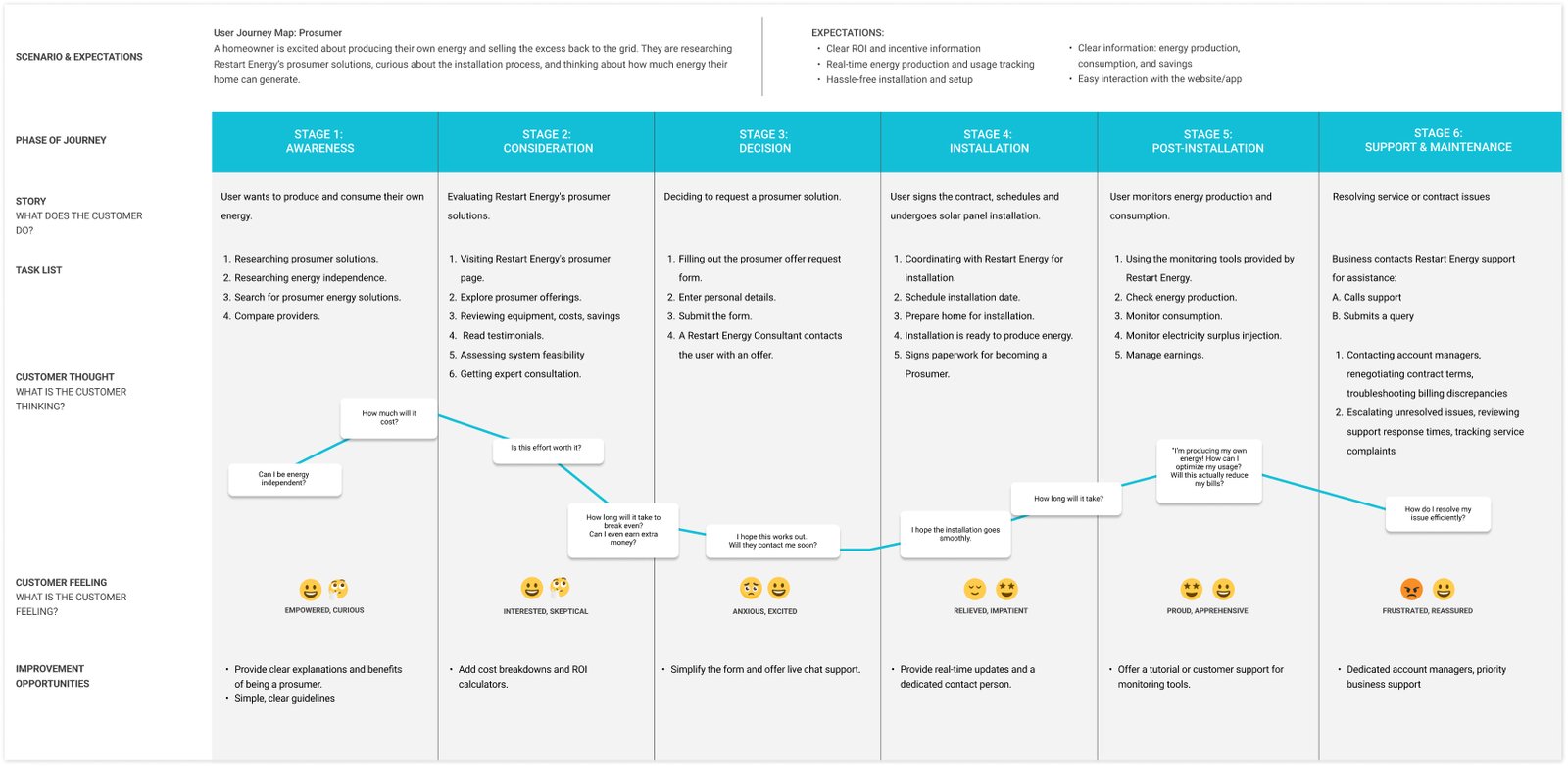
The design process
In order to perform usability studies with stakeholders, I first designed paper wireframes before moving on to digital wireframes with a low-fidelity prototype.
A sitemap is a diagram or file that outlines the structure and organization of a website’s pages.
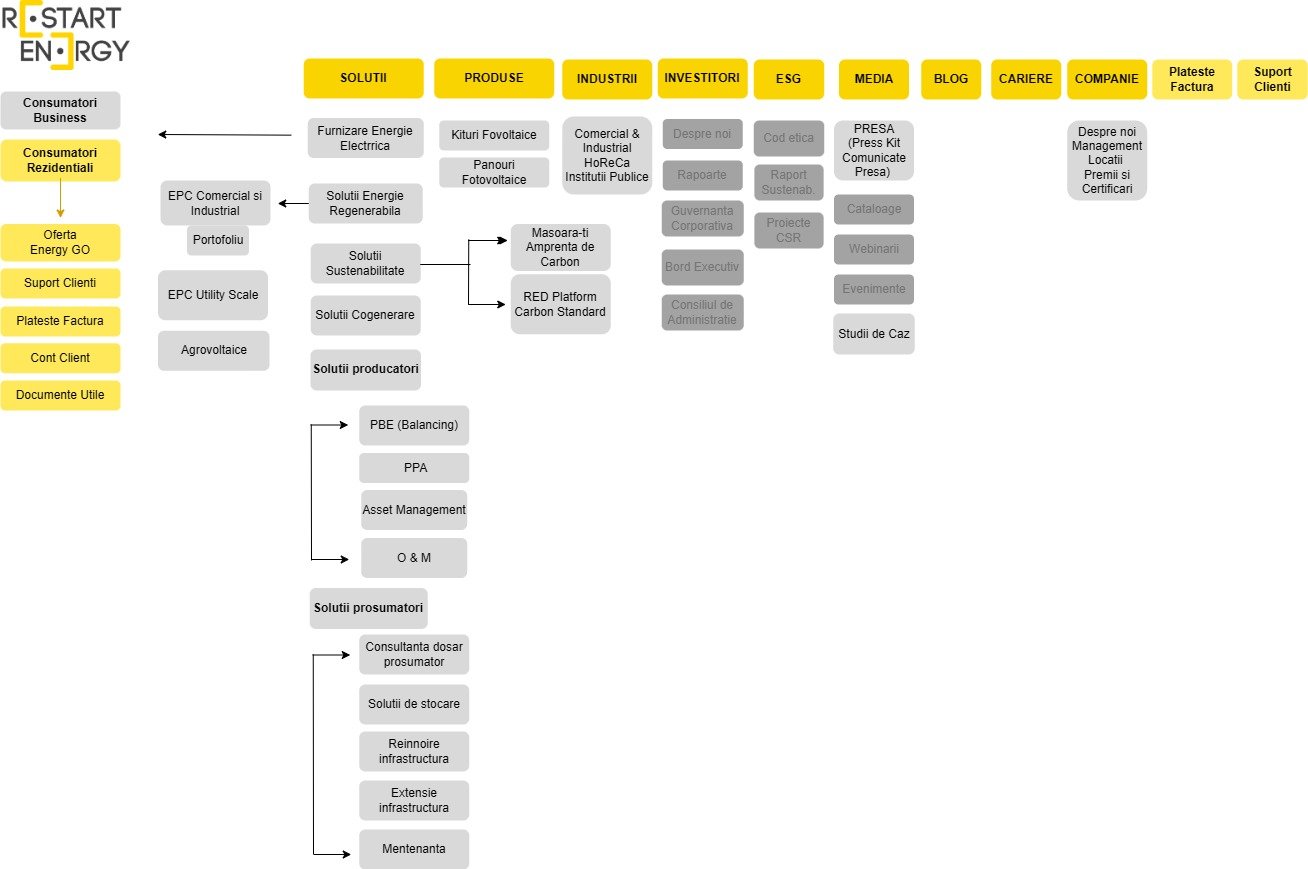
I drafted multiple layout variations to explore different ways the information could be structured.
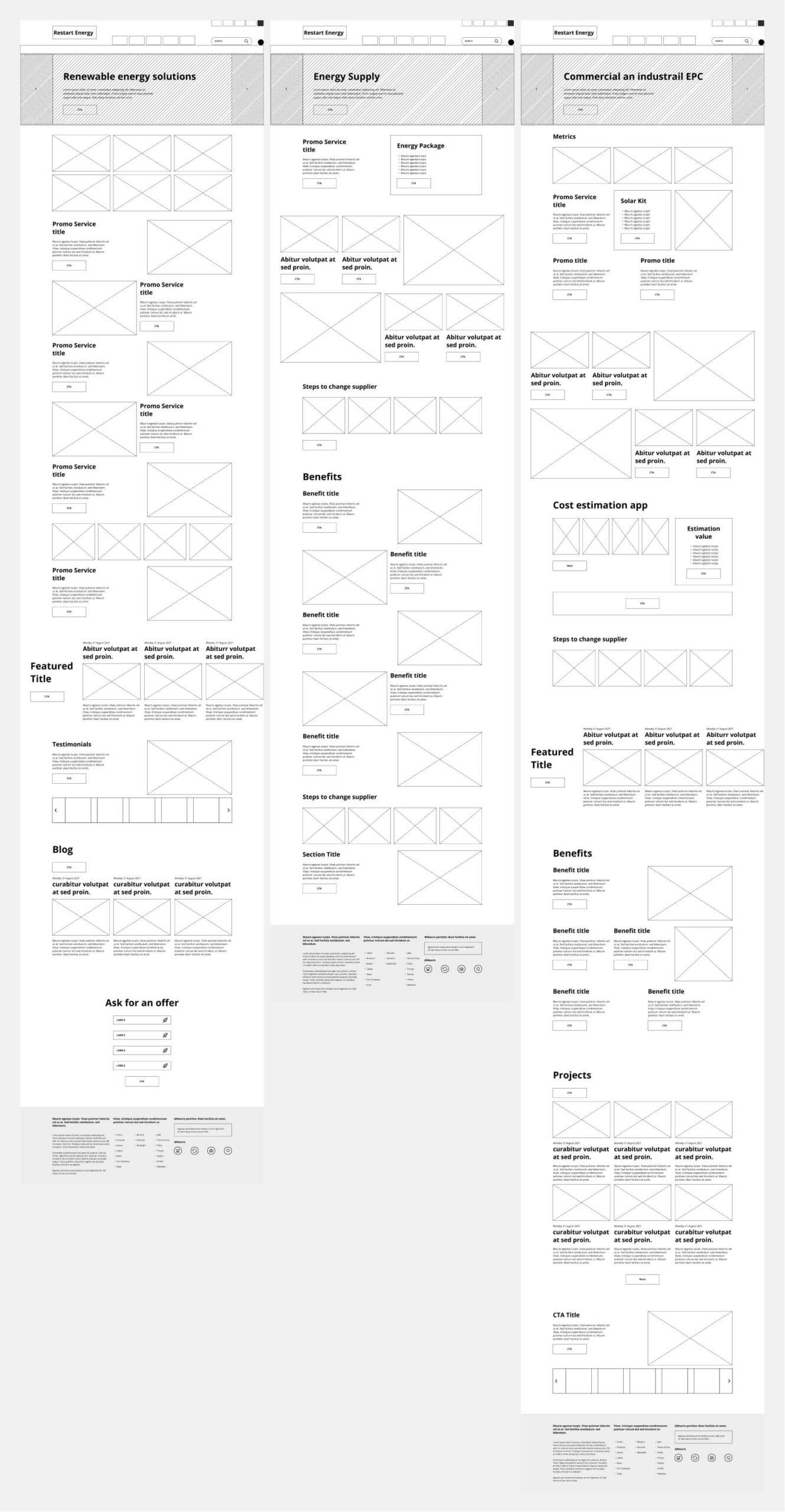
I designed a streamlined user flow for Restart Energy, ensuring a smooth journey from exploration to conversion. By simplifying navigation and optimizing key actions like requesting quotes and switching to a new provider, I made the process more intuitive and user-friendly. I created the user flow as a visual representation of the steps a user takes to complete a task within the website, such as switching provider, contracting new services, making a payment, or getting support. It maps out decision points, actions, and possible paths based on user choices.
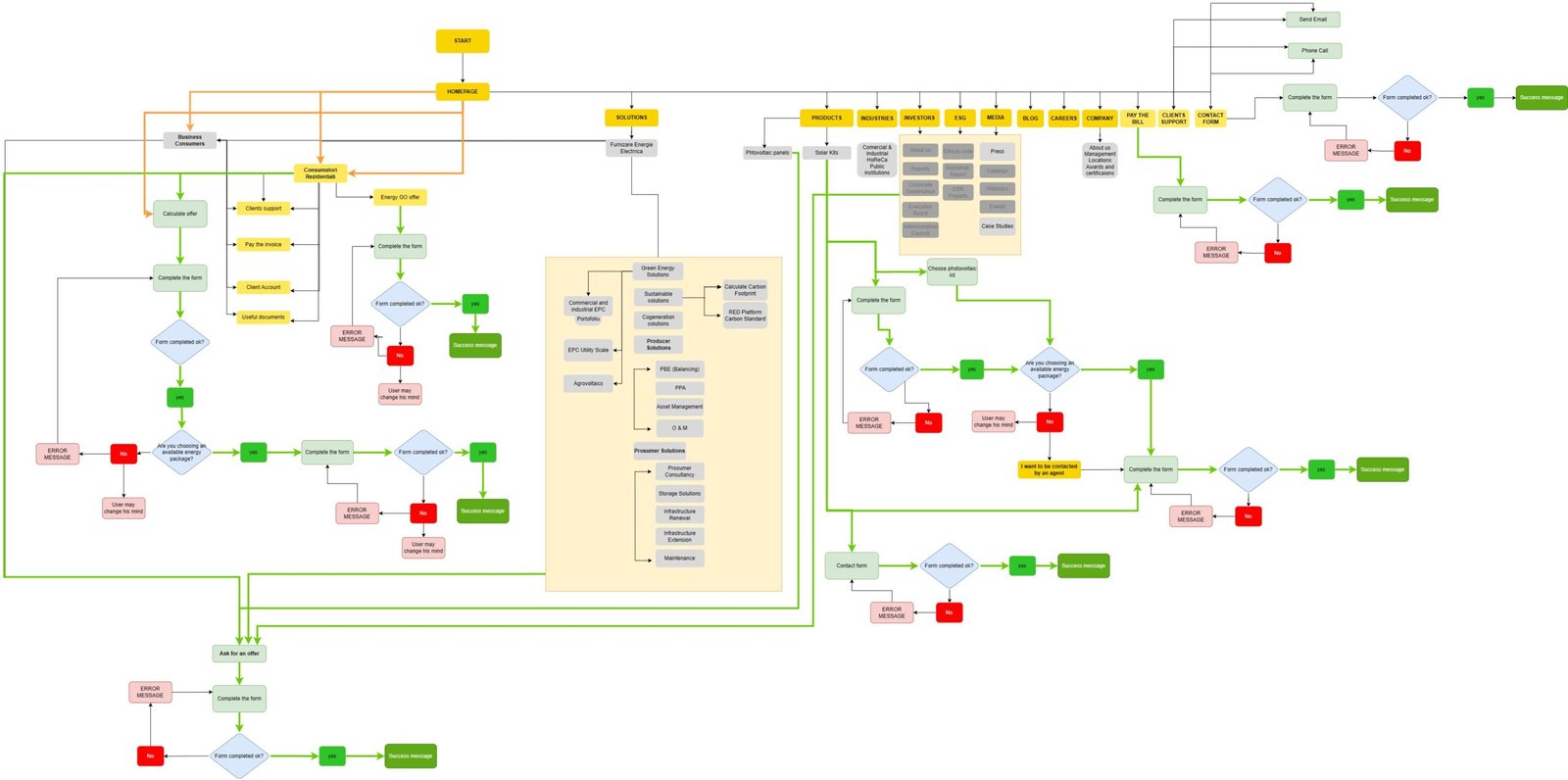
I created a consistent visual style in Figma to enhance clarity and build user trust for Restart Energy. By developing a structured design system with reusable components, color palettes, and typography, I ensured a seamless and cohesive user experience across the website.
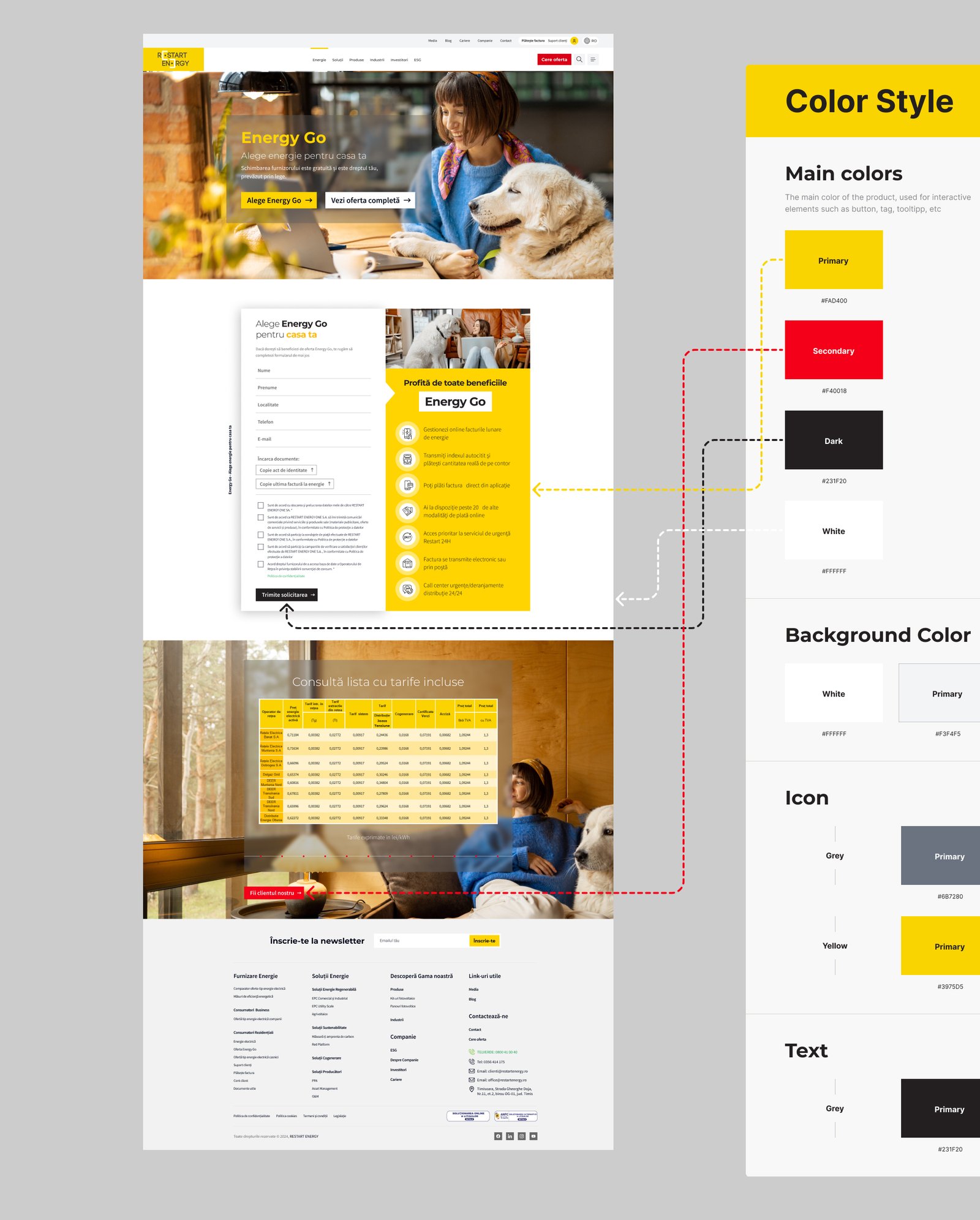
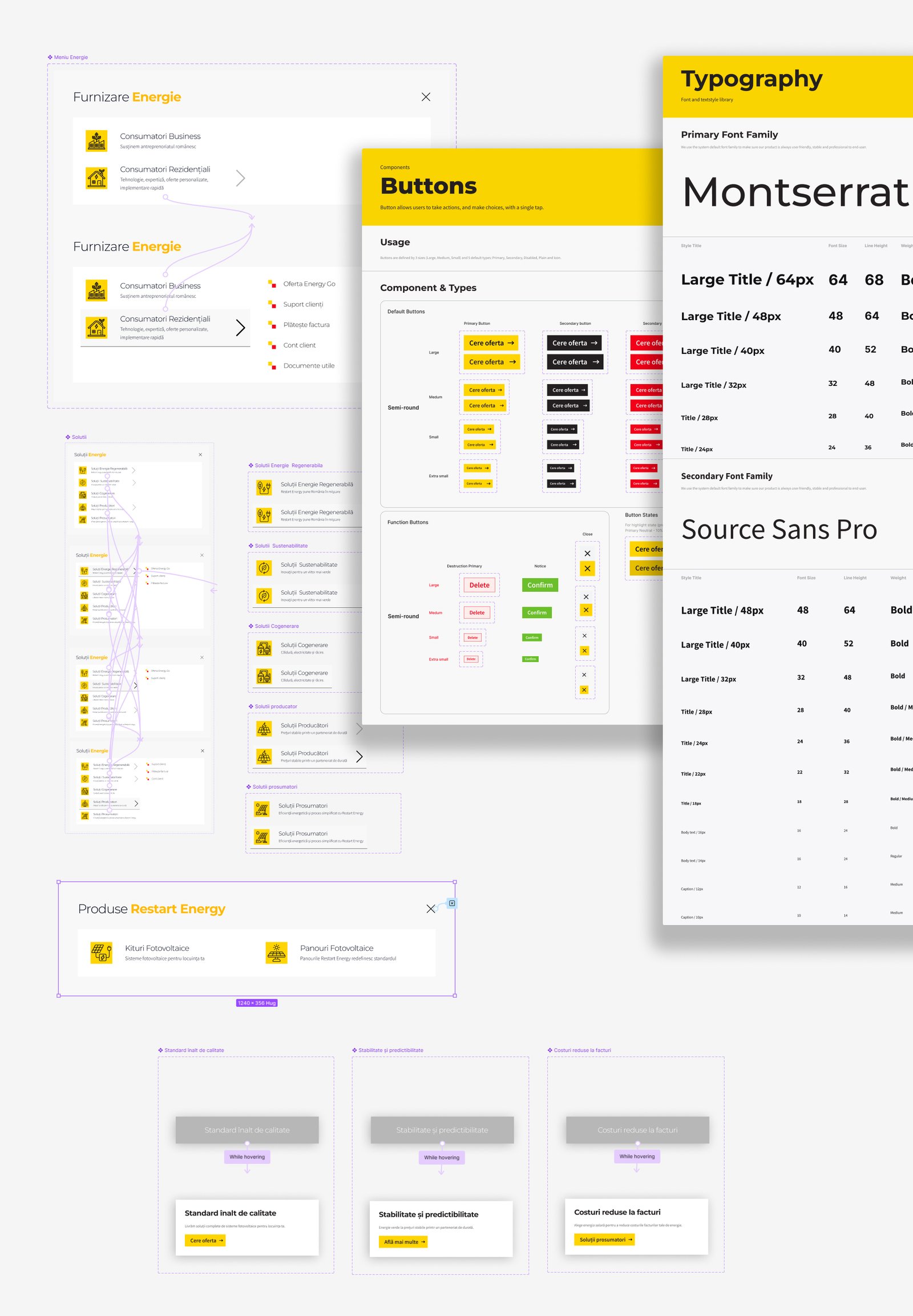
Visual Design
At this stage, I developed a high-fidelity, static design for the Restart Energy website, ensuring it reflected the key insights from previous usability studies. This design mockup serves as a precise representation of the final product.
I created mockups for all website pages, thoughtfully integrating design elements such as typography, color schemes, and iconography. I also incorporated visually engaging images and built all essential components and elements.
The objective was to present the final Restart Energy website with the highest level of detail and accuracy.

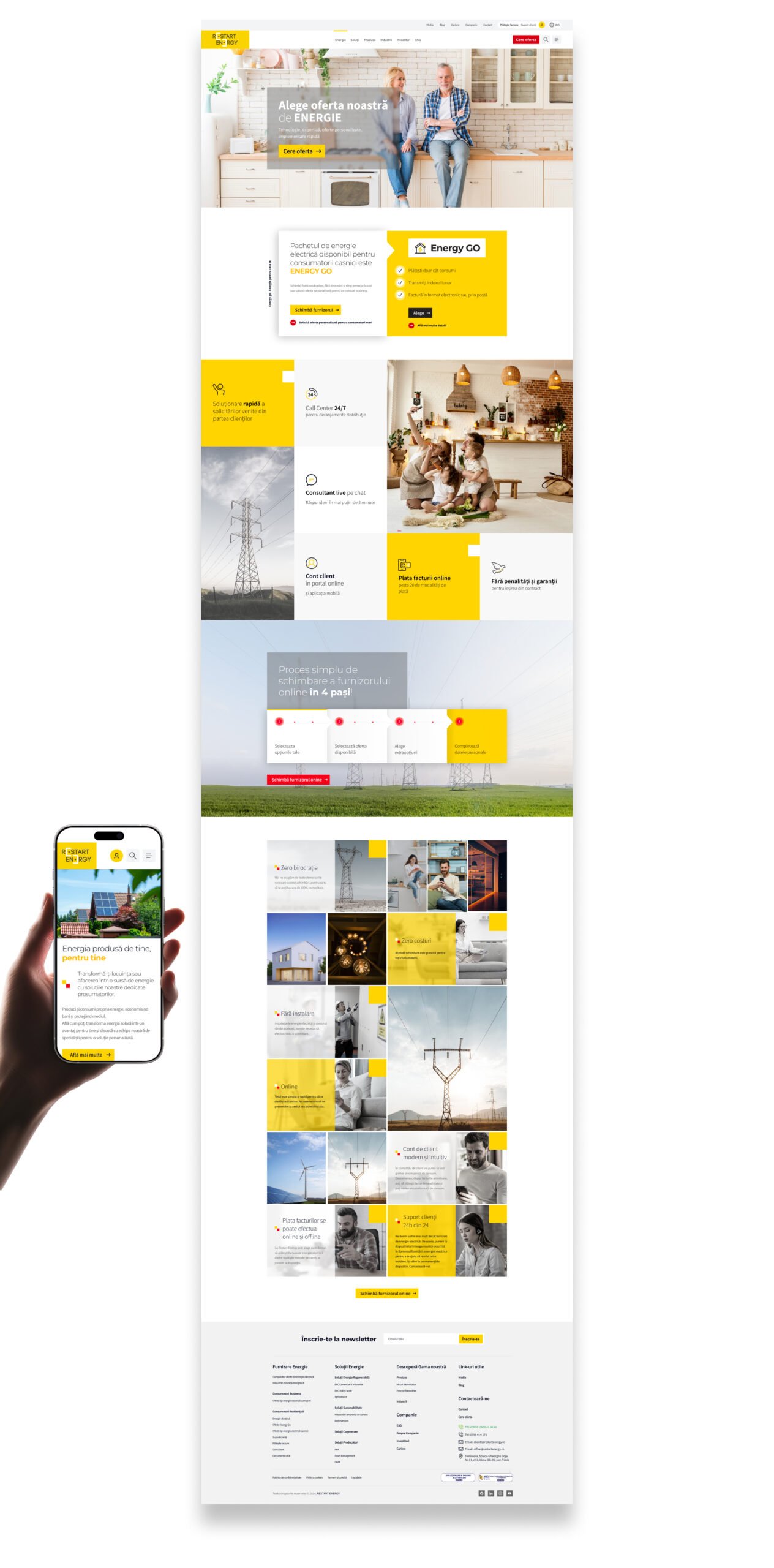
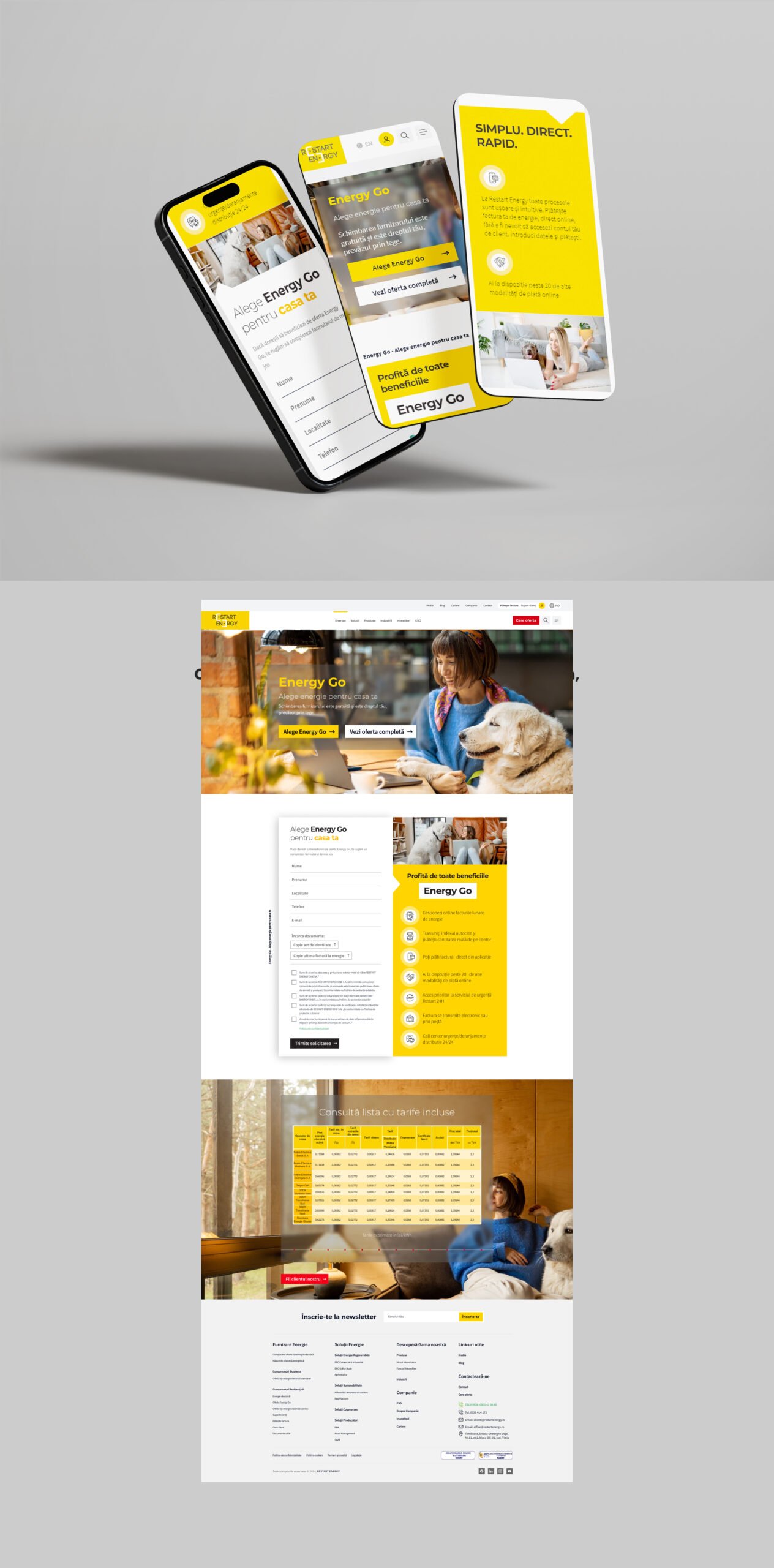
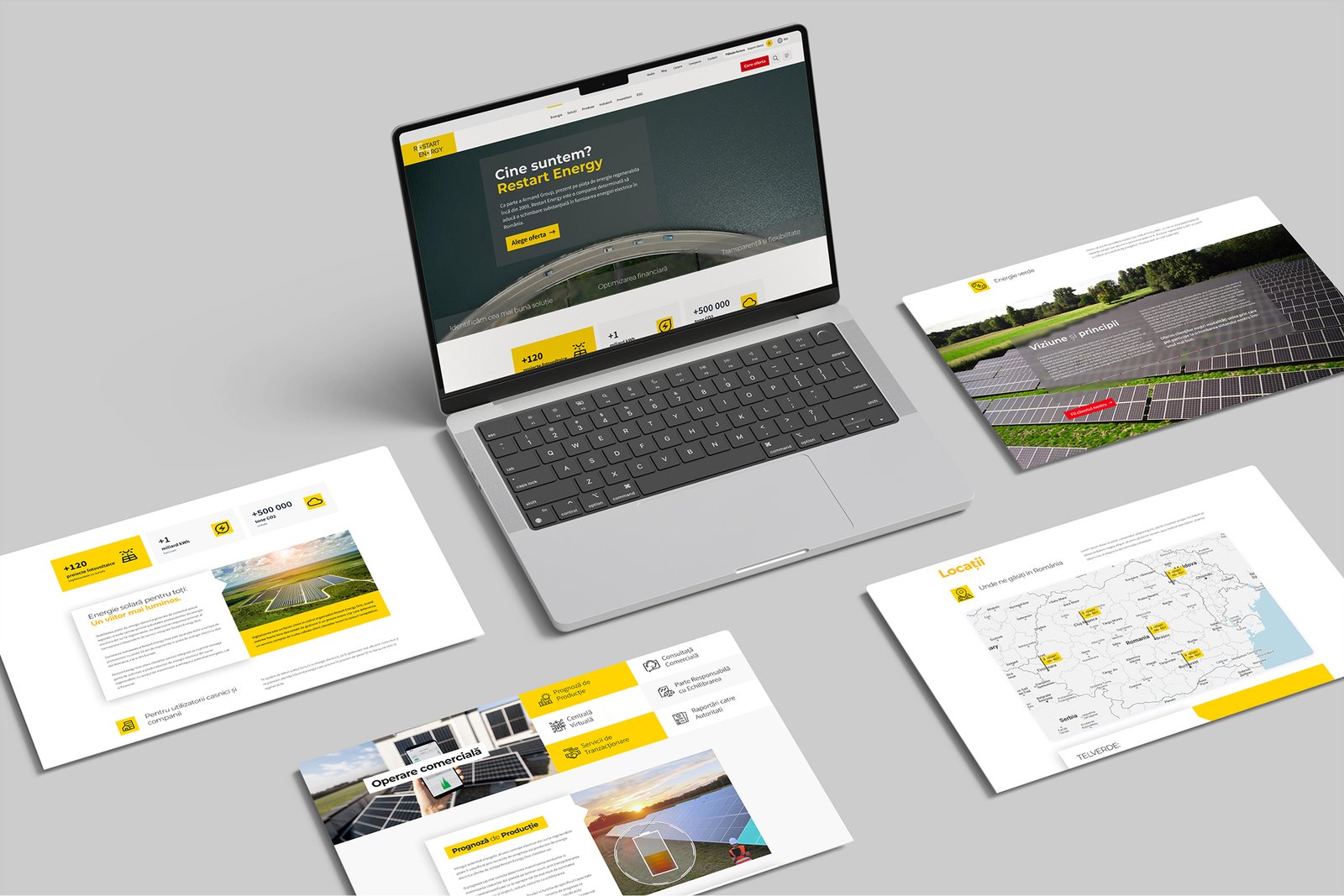
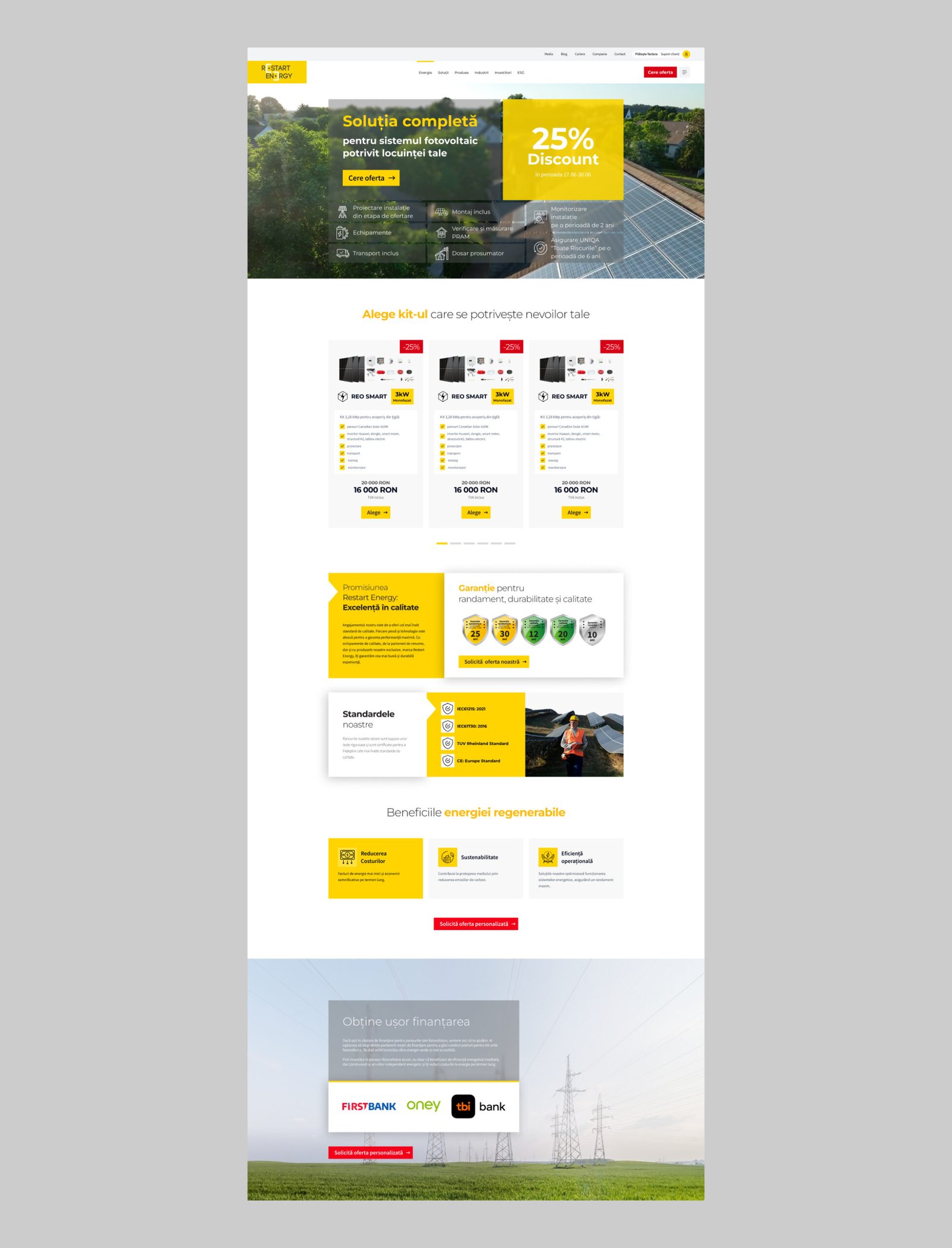
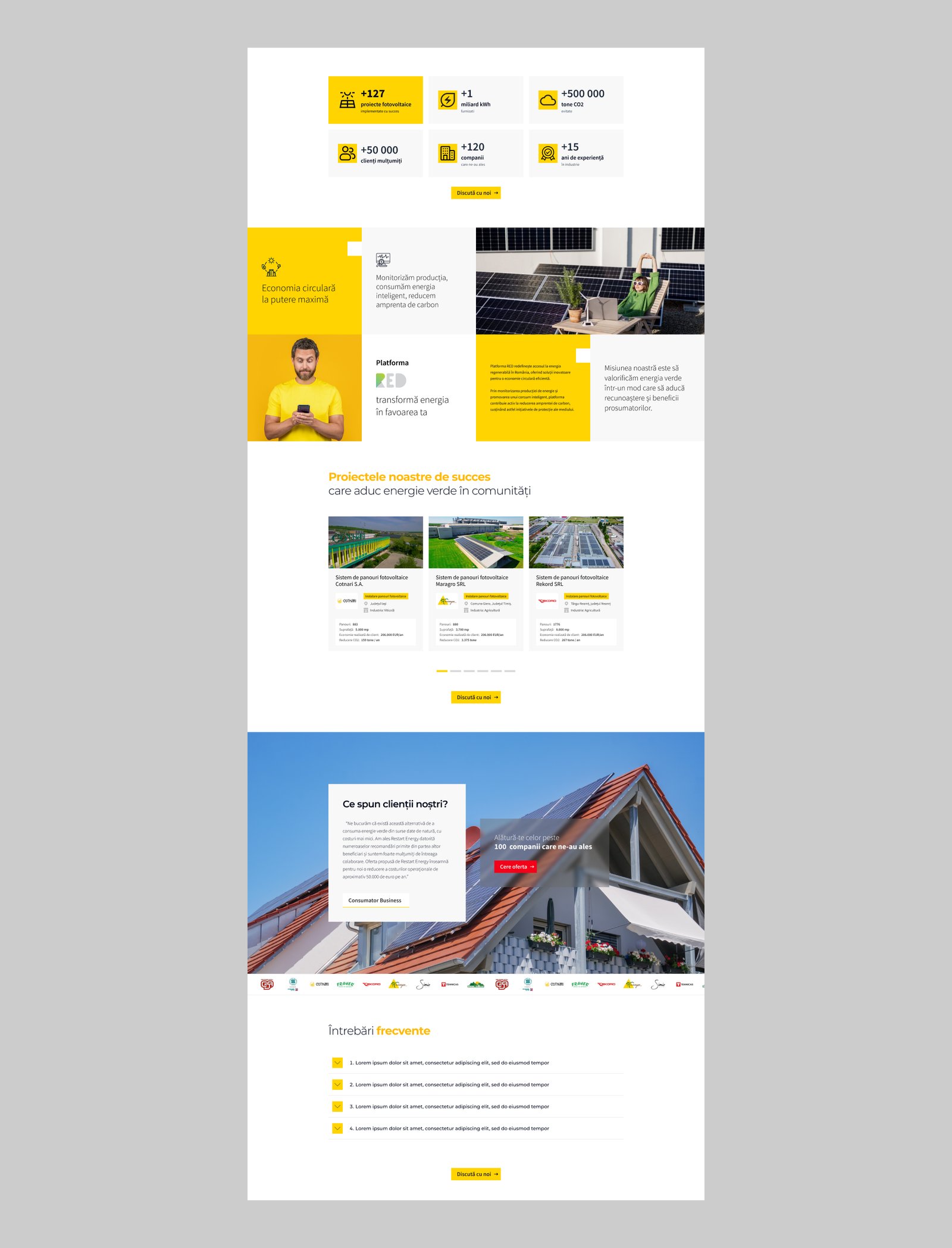
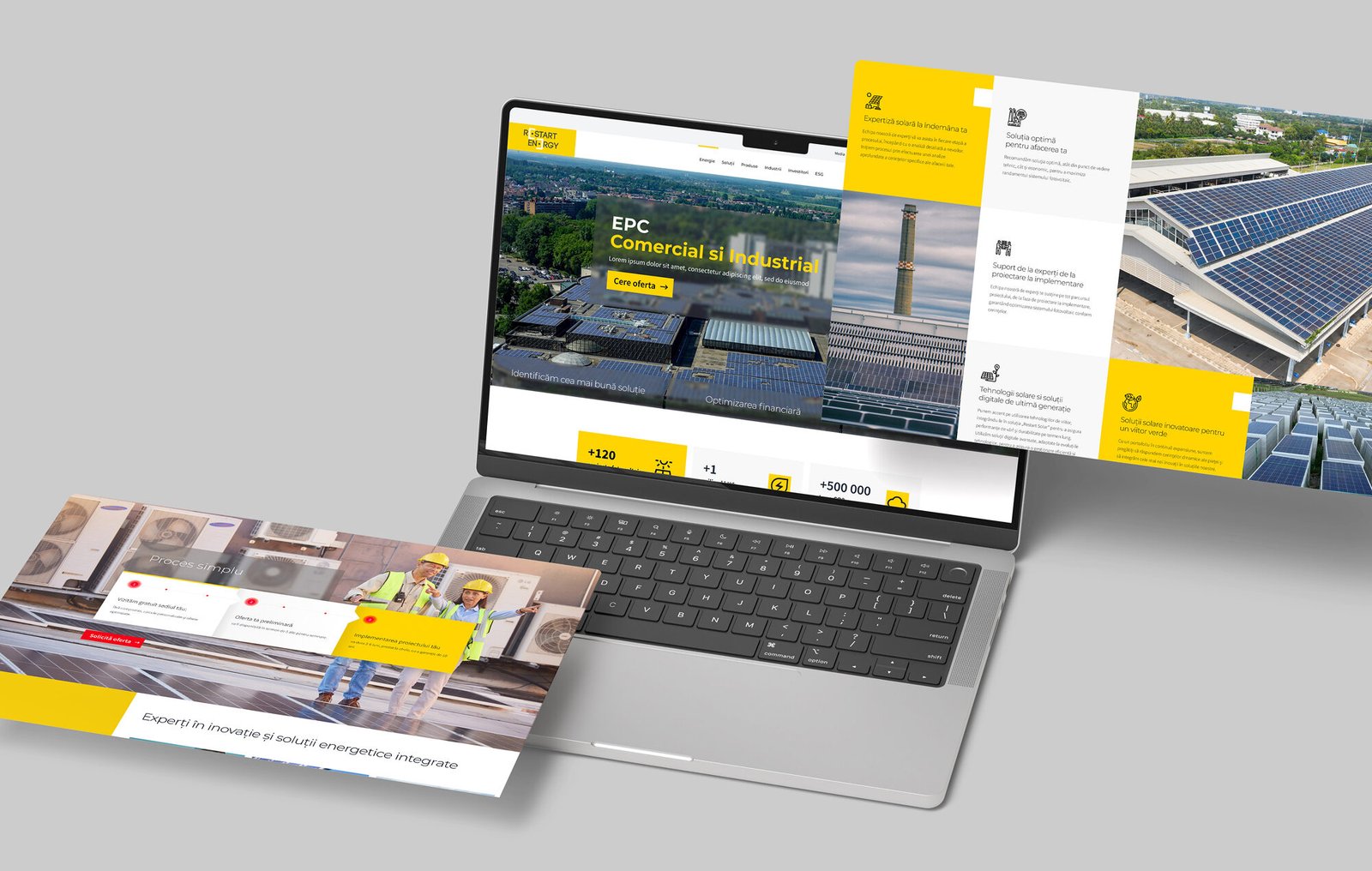
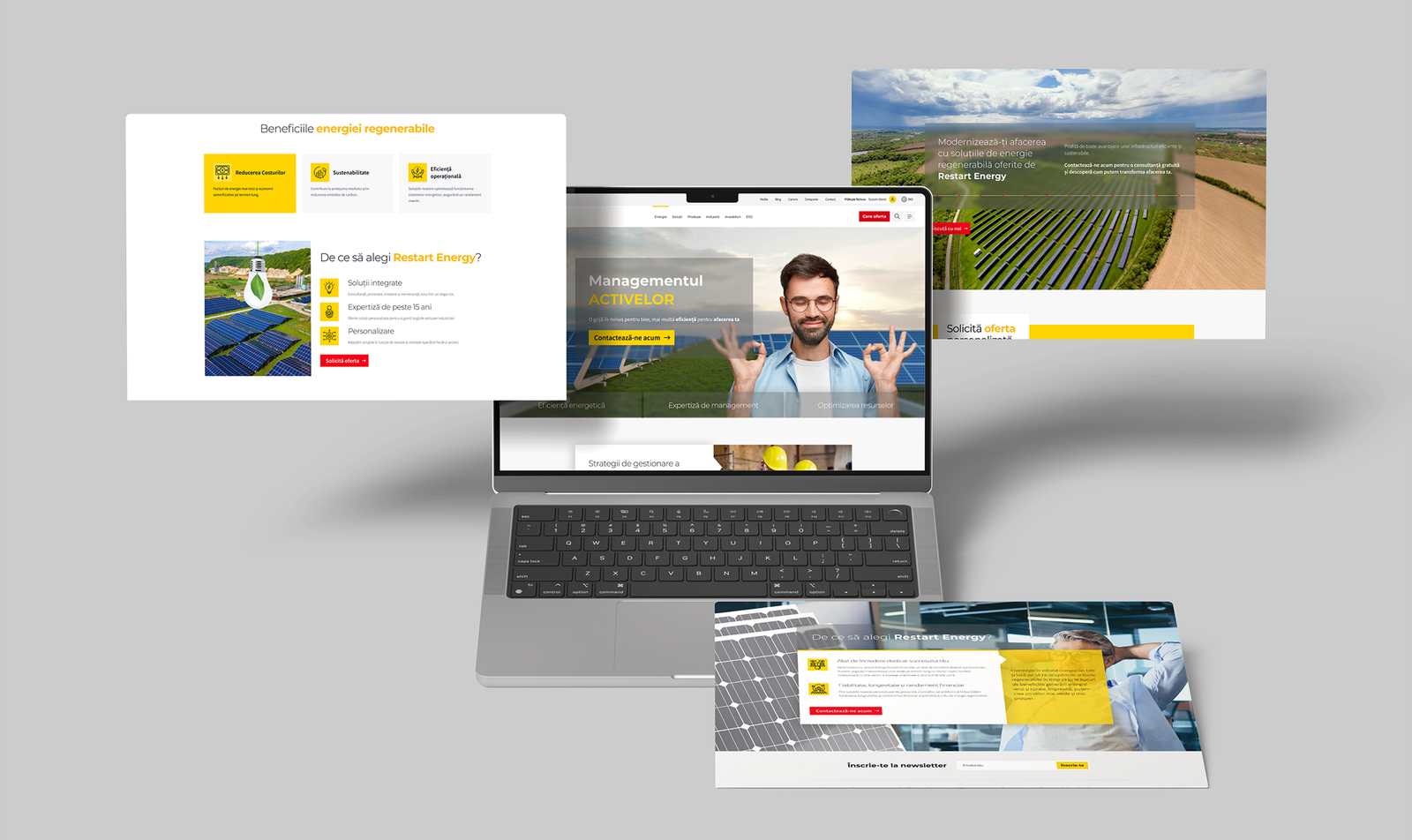
Outcome
Results and impact
The redesigned user flow and website structure have significantly improved user navigation, making it easier for residential and business customers to explore energy solutions, compare options, and request offers. Information on solar energy, financing options, and sustainability initiatives is clearer and more accessible, reducing decision-making friction.
Key Takeaways
A key takeaway from this research is that clarity and simplicity in presenting renewable energy solutions are essential for user confidence. Many users feel overwhelmed by technical details and financing options, so breaking down complex information into digestible steps greatly improves their experience. Additionally, incorporating real user testimonials and interactive tools, such as ROI calculators, can strengthen decision-making.
Next steps
Conduct iterative usability testing to evaluate how users navigate the quote request and provider-switching processes, identifying any friction points.
Refine the consultation and onboarding experience based on user feedback to streamline interactions and improve conversion rates.
Test and optimize interactive features, such as the ROI calculator and sustainability tracker, to ensure they provide clear and actionable insights.
Continuously gather user feedback through surveys and heatmaps to inform future design improvements and iterations.


